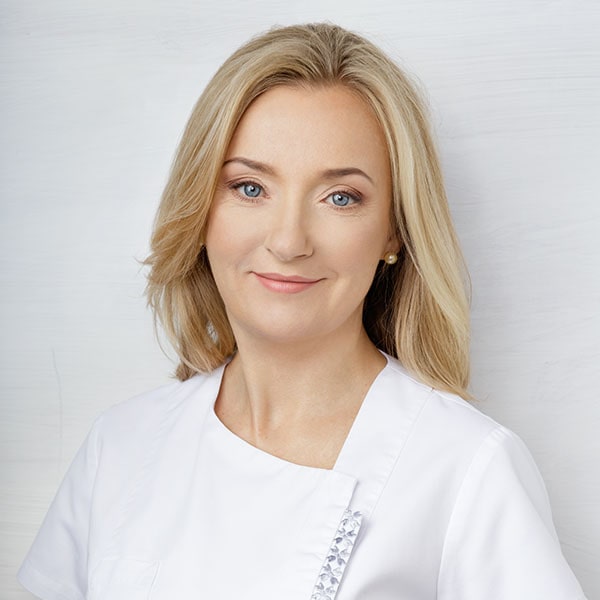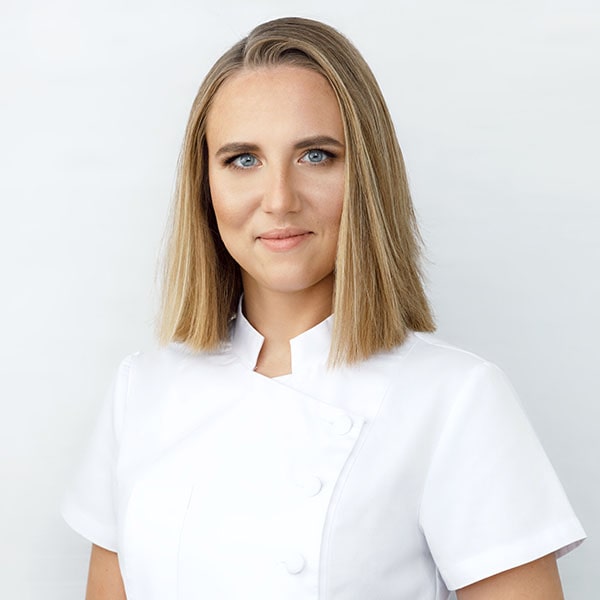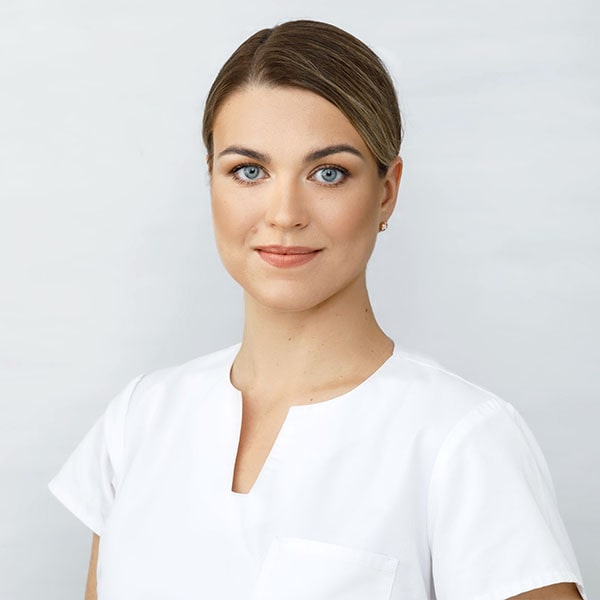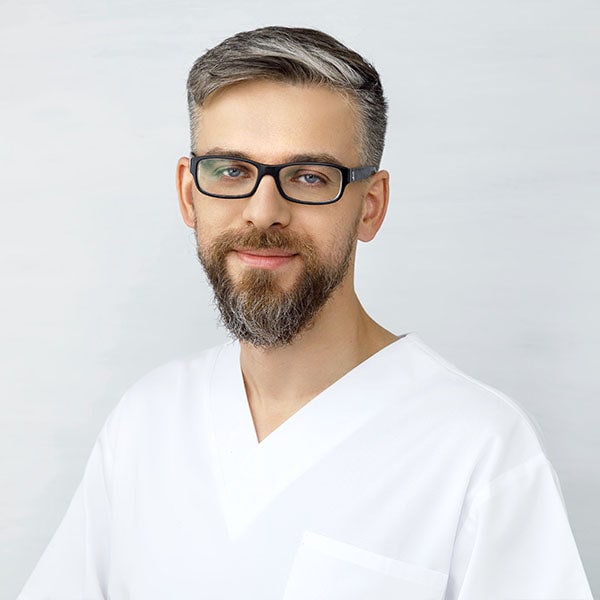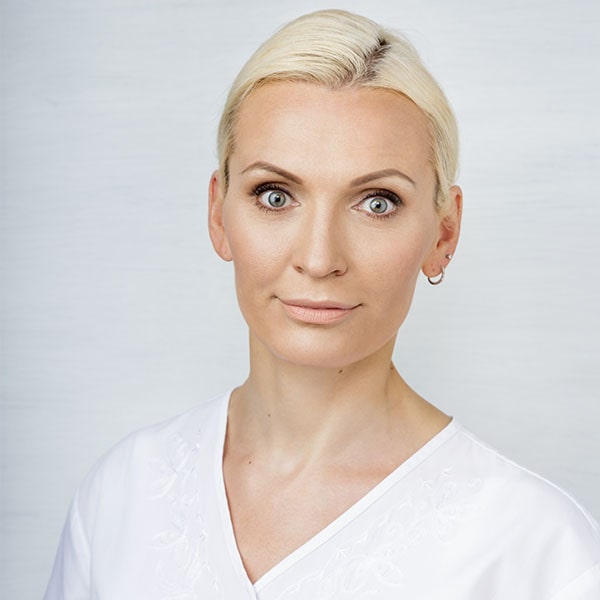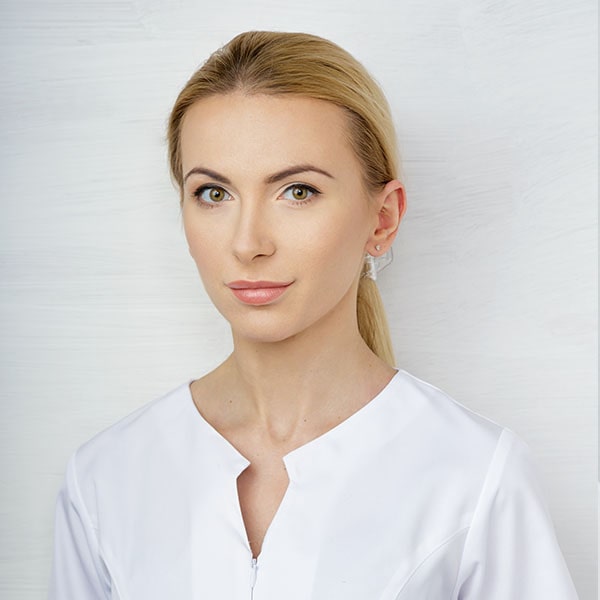
Professional oral hygiene
Professional oral hygiene procedures are the cleaning of hard tooth tartar, soft plaque, and brown spots with hand and electric dental instruments. The complex of professional oral hygiene procedures allows you to maintain healthy teeth and gums, as well as reducing the risk of serious dental diseases.
- Stages of a professional oral hygiene appointment
- Why is a professional oral hygiene session important?
- What are the consequences of poor oral hygiene?
- How often should professional oral hygiene be performed?
- Professional oral hygiene for children
- Professional oral hygiene when wearing braces
- Professional oral hygiene in our clinic
- Frequently asked questions
- Pricelist
Stages of a professional oral hygiene appointment
During this procedure, a dental hygienist cleans the tartar that accumulates and hardens on the surface of the teeth due to improper teeth cleaning or in hard-to-reach areas. Brown spots are also removed from the tooth’s surface, allowing the teeth to acquire a beautiful and natural colour. After a professional oral hygiene checkup, freshness is felt in the mouth, the enamel surface becomes strong and smooth, and bad breath is eliminated.
1 – Ultrasonic removal of hard tartar
Tartar slowly builds upon the surface of teeth or dentures, in the interdental spaces and in the gums, which are difficult to reach with toothbrushes. Tartar is an attractive place for bacteria to accumulate, which often leads to gingivitis, periodontitis, and caries. Therefore, during a professional oral hygiene appointment, solid tartar deposits are removed with vibrations from an ultrasonic dental scaler. Ultrasound removal of tartar is a safe and painless procedure. It is a great alternative to other, manual, or chemical methods of removing tooth calculus.
2 – Sandblasting of brown spots
Brown spots form on the surface of the teeth due to the consumption of teeth-staining foods (tea, coffee, lemonade), or for other reasons. Our professional oral hygienists remove any tooth stains using advanced Air Flow equipment, which is a procedure where a stream of a mix of water, air and special soda powder is pressure-sprayed onto the surface of the teeth with a special device. Sandblasting removes brown spots from both the tooth’s surface and between the teeth. Air Flow cleaning is painless and does not damage the enamel surface. After cleaning, the teeth become brighter and a pleasant freshness is felt in the mouth.
3 – Tooth polishing with paste
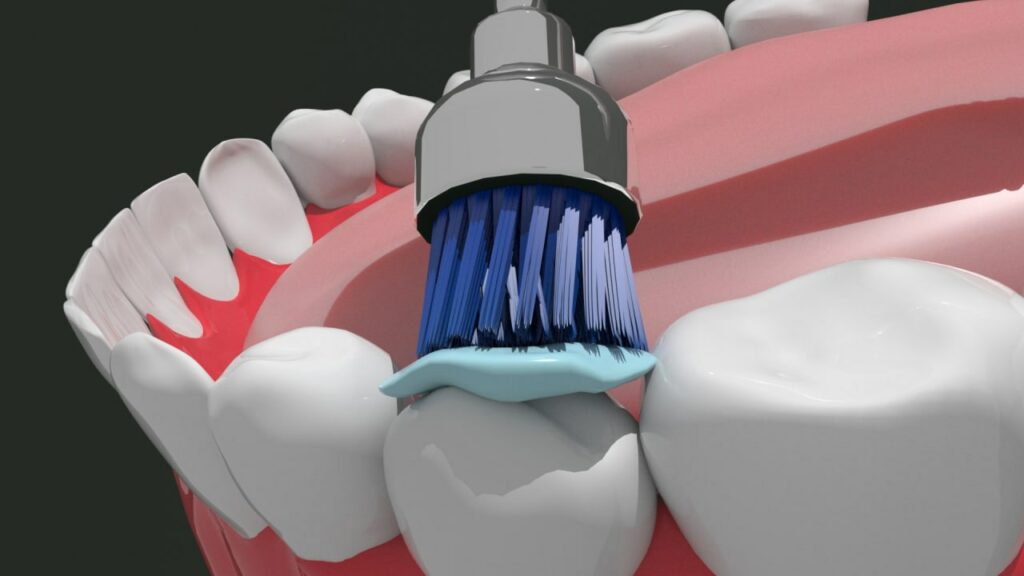
The last stage of professional oral hygiene appointment is tooth polishing and the application of remineralising gels. Firstly, the teeth are thoroughly polished with a paste, special brushes with rubber polishing heads and disks, allowing the teeth to become smooth and shiny. After the polishing procedure, mineral-enriched creams and fluoride gels are applied to the tooth surface. They strengthen the enamel surface, increase resistance to mouth acids and tooth decay.
Want to find out how to take care of your smile? Individual oral hygiene training is provided after the procedure!

After a professional oral hygiene procedure, an oral hygienist will:
- Assess the condition of the teeth and gums.
- Show problematic areas.
- Give advice on personal oral care.
- Help choose the right oral hygiene tools and consumables.
Why is a professional oral hygiene session important?
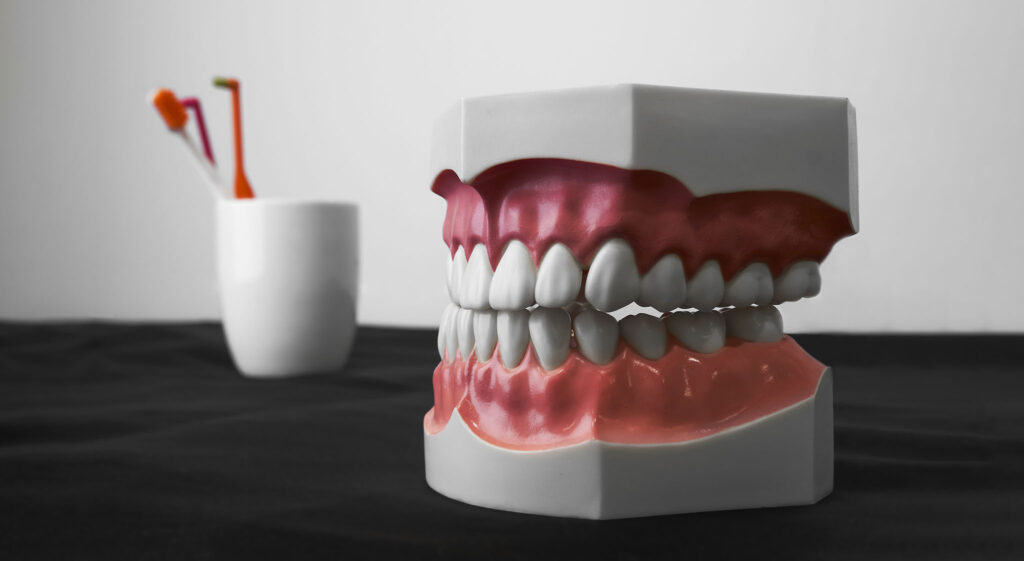
No matter how well the teeth are cleaned, a small amount of plaque may remain in the tooth grooves, interdental spaces, near the posterior molars, and other areas that are difficult to reach with only a toothbrush. Over time, that plaque hardens and tartar begins to form. Tartar not only spoils the appearance of teeth but also becomes a great medium for bacteria to break down tooth enamel. Small cavities form in the places where the tooth enamel is damaged, and tooth decay occurs. Tooth tartar can also often cause gingivitis and gum bleeding. These problems can be avoided by removing tartar during a professional oral hygiene session.
Professional oral hygiene is one of the most important and effective preventive dental protection measures. Regular professional oral hygiene checkups ensure greater resistance to tooth decay and gum diseases, help to get rid of bad breath, and maintain the aesthetic appeal of teeth. Professional oral hygiene sessions are also often required before performing other dental procedures – teeth whitening, prosthetics, periodontal treatment, etc.
What are the consequences of poor oral hygiene?
Not following oral hygiene guidelines, as well as not having professional oral hygiene appointments regularly, can lead to serious dental and gum diseases:
- Tooth decay
Tooth decay can increase tooth sensitivity, cause toothache, and can cause irreversible damage to the affected teeth if left untreated. Treatment of tooth decay requires dental filling. - Gum diseases
Tartar accumulating on the surface of the teeth can cause bleeding, redness, inflammation of the gums, and bacterial gingivitis. Over time, gum diseases can destroy gum tissues, dissolve bone, and eventually lead to tooth loss. Gum diseases require periodontal treatment. - Pulpitis
Pulp is the central part of the tooth made up of blood vessels, nerves and other soft tissues. Damage caused by tooth decay due to poor oral hygiene habits can lead to pulpitis – bacterial inflammation of the pulp. Treatment of pulpitis may require endodontic treatment of the root canals of the teeth.
Therefore, proper and regular professional dental hygiene checkups help to maintain the health of teeth and gums as well as preventing the need for expensive treatment and prosthetics due to the serious consequences of dental diseases.
How often should professional oral hygiene be performed?
The recommended frequency of professional hygiene appointments depends on various factors – the frequency of the formation of tartar and brown spots, the condition of the gums, wearing braces, patient’s periodontal diseases, etc.
For patients without any complaints or oral diseases, professional oral hygiene appointments are recommended every 6 months. In case of any periodontal diseases, smoking habit, a faster rate of tartar accumulation or wearing braces, it is recommended to perform the procedure every 3-4 months.
Personalised recommendations for professional oral hygiene (and its frequency) are provided by the oral hygienist during the consultation.
Professional oral hygiene for children
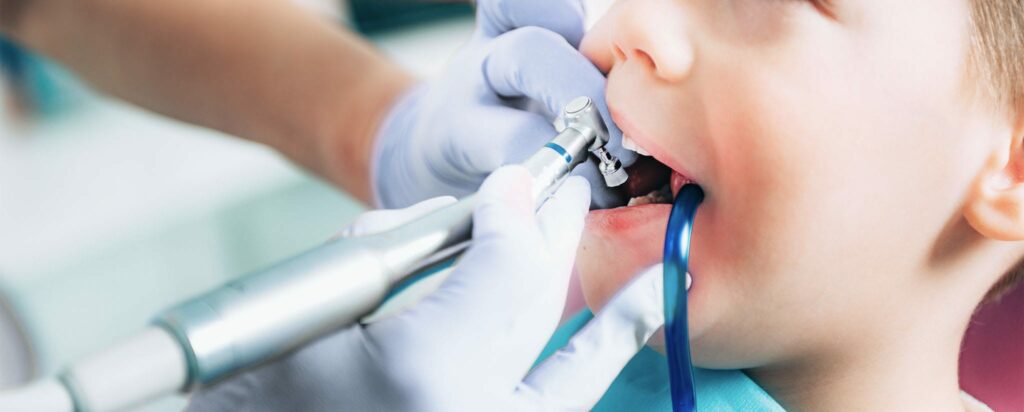
Until a child is 8 years old, their oral hygiene skills are almost always insufficient to properly care for their teeth. It is generally recommended that parents take care of brushing their child’s teeth until they learn to write. This is due to the fact that a young child’s hands lack the coordination to properly use a toothbrush and other dental care tools. The best advice is to gradually accustom your child to using a toothbrush and to ensure that their teeth remain clean after they brush them.
Tartar can also accumulate on the milky teeth though the rate of its formation is highly dependent on a child’s oral hygiene care. One of the consequences of the accumulation of tartar is tooth decay. A toothache caused by tooth decay can interfere with the child’s sleep, studying, and eating which can all negatively impact their behaviour. Children can avoid brushing the painful area, further accelerating the spread of tooth decay. Milky teeth that have fallen out or been removed too early do not support the growth of molars near them, which can lead to the formation of improper occlusion and crooked teeth. As a result, long-term and complex orthodontic treatment may be required in the future.
Therefore, it is important for children to have regular professional oral hygiene appointments. During children’s professional oral hygiene appointment, hard tartar is removed using hand tools which ensures the surface safety of milky teeth. After the procedure, children and their parents are trained to perform oral hygiene effectively at home. Professional oral hygiene appointments are a painless and effective way to protect children’s teeth from decay. Regular visits to a child’s dentist’s office promotes healthy habit formation from an early age.
Professional oral hygiene when wearing braces
Orthodontic systems make it difficult to maintain oral hygiene. This is due to having more spots that are difficult to reach with standard toothbrushes. Food residue gets stuck in these spots, and dental plaque builds up faster. Once hardened, plaque turns into tartar, which will begin to demineralise the enamel.
It is recommended to use special toothbrushes when wearing braces – single tufted toothbrushes, as well as orthodontic interdental floss and interdental brushes. It is also recommended to attend a professional oral hygiene appointment more frequently than usual – every 3-4 months. Each patient’s case is individual, so drawing up a personal oral care plan and giving advice is best done by a dentist during the consultation.
For patients wearing braces, the professional oral hygiene procedure is performed carefully and cautiously. We ensure that the tools used during the procedure do not damage the orthodontic structures and the adhesive that supports them. It is completely safe to perform a professional oral hygiene procedure with braces.
Professional oral hygiene in our clinic
Our clinics employ responsible, highly experienced oral hygienists. We use only the most advanced and effective tools for professional oral hygiene procedures. We always make sure that our patients remain satisfied with the quality of their professional oral hygiene appointment.
Frequently asked questions
Pricelist
Adults
| Professional oral hygiene | 60-85 € |
| Application of fluoride paste (all teeth) | 50 € |
| Removal of adhesives (after treatment with braces) | 100 € |
| Teeth polishing | 50 € |
Children
| Professional oral hygiene | 57-67 € |
| Application of fluoride paste (all teeth) | 35 € |


